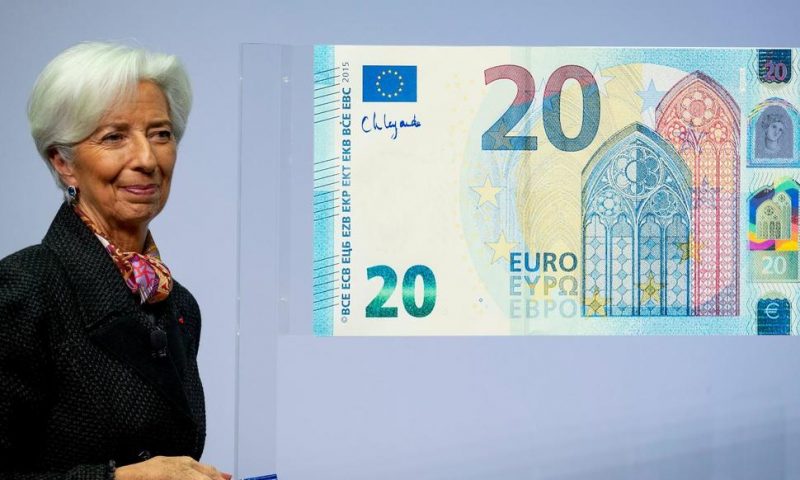Unemployment across the 19-country eurozone has fallen to its lowest rate since July 2008 even though growth is cooling amid the U.S.-China trade war and Brexit uncertainty.
LONDON — Unemployment across the 19-country eurozone has fallen to its lowest rate since July 2008 even though growth is cooling in the face of headwinds like the U.S.-China trade war and uncertainty related to Britain’s departure from the European Union.
The European Union’s statistics agency, Eurostat, said Friday that the jobless rate across the single currency bloc declined in October to 7.5% from 7.6% the previous month. Over the month, the number of people out of work fell by 31,000 to 12.33 million.
Unemployment has been falling steadily in the eurozone for the past few years as the region recovered from a financial crisis and fears over Greece’s future in the euro abated.
Disparities between countries remain, though they are not as huge as they were in the midst of the region’s debt crisis. While unemployment has remained super-low in Germany, at 3.1%, it has fallen sharply over the past few years in Spain and Greece. Both had been struggling under jobless rates of over 25% at one point. Now, their unemployment rates stand at 14.2% and 16.7%, respectively.
Policymakers at the European Central Bank had been hoping that the sustained falls in unemployment would bolster wages, giving inflation a lift. That hasn’t happened as expected and inflation has been stubbornly below the ECB’s goal of just below 2% for large periods over the past few years.
As a result, the bank has had to enact a series of monetary stimulus measures, including slashing its main interest rate to zero. Its new president, Christine Lagarde, is hoping that inflation heads toward the target in coming months so the pressure on the bank to announce further stimulus measures dissipates.
Some evidence did emerge Friday that inflation pressures may be building. Eurostat said consumer price inflation rose to 1% in the year to November. That’s up from the previous month’s rate of 0.7% and ahead of market expectations for 0.9%.
The rise was largely due to higher food, alcohol and tobacco costs.
Stripping out those items, as well as energy costs, the so-called core inflation rate also increased, to 1.3% from 1.1%. That suggests wage increases may be finally boosting prices.
Recently, the bank announced a package of stimulus measures including 20 billion euros ($22 billion) a month of purchases of government and corporate bonds, a step that pumps newly printed money into the financial system to stimulate lending, growth and, hopefully, inflation.
There are concerns that the recent slowdown in economic growth will mean unemployment starts to rise again, dampening inflation again. In the third quarter of the year, the eurozone economy expanded only 0.2% from the previous three months.
“With surveys pointing to a further slowdown in employment growth, while firms are no longer experiencing the shortages of workers that they suffered from last year, we think that inflationary pressure from the labor market will remain muted,” said Jessica Hinds, European economist at Capital Economics.
“As a result, the ECB still has a lot of work to do to get inflation rising.”

